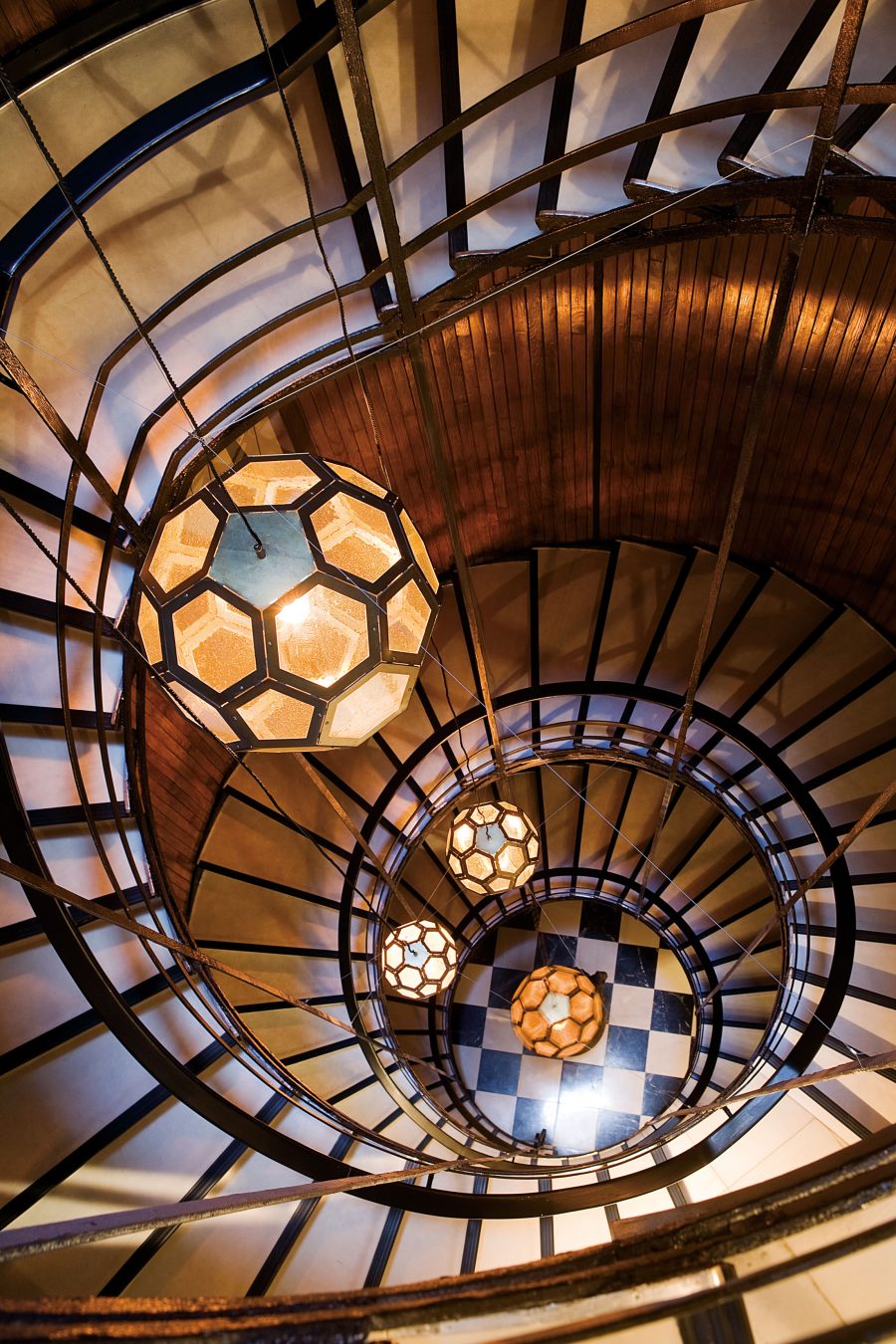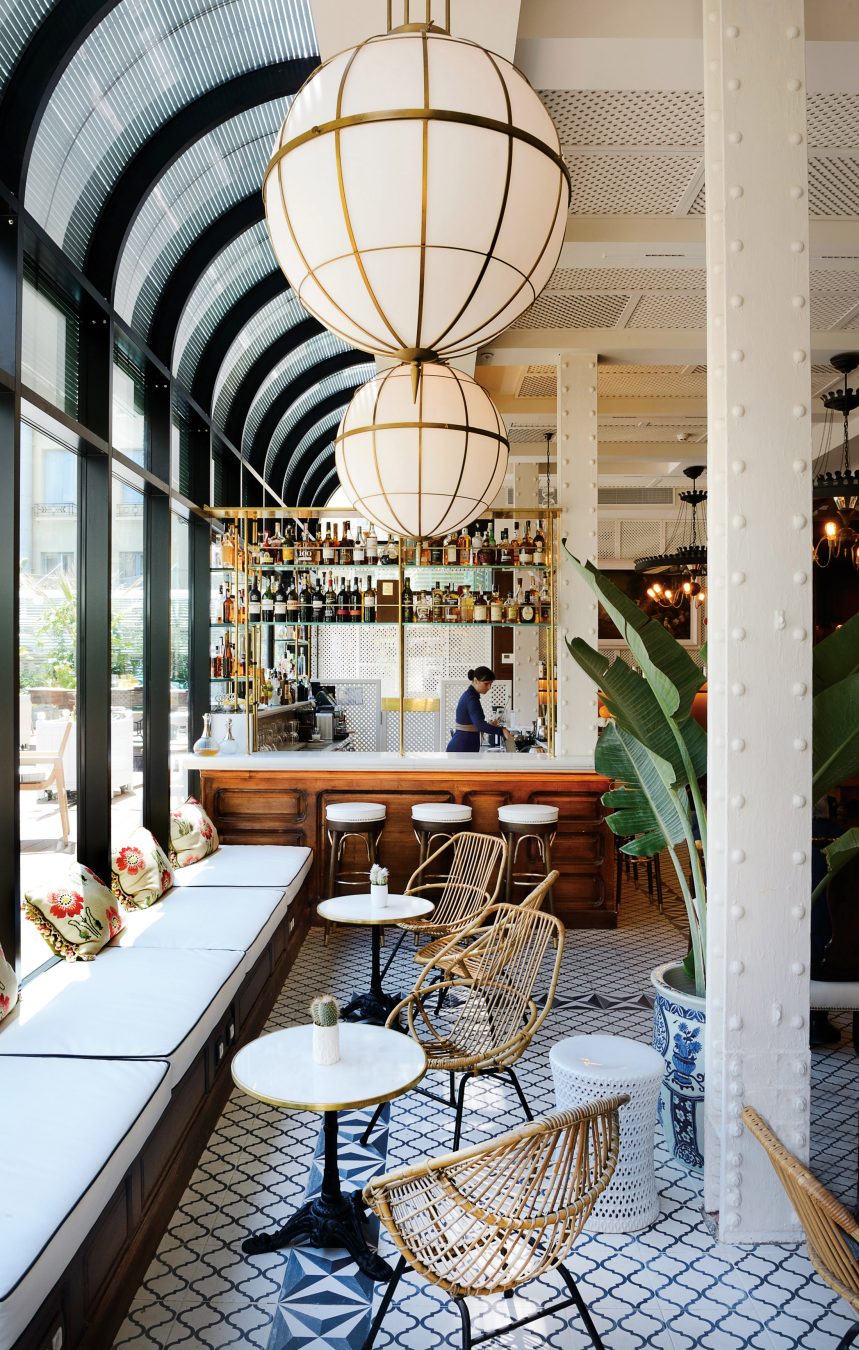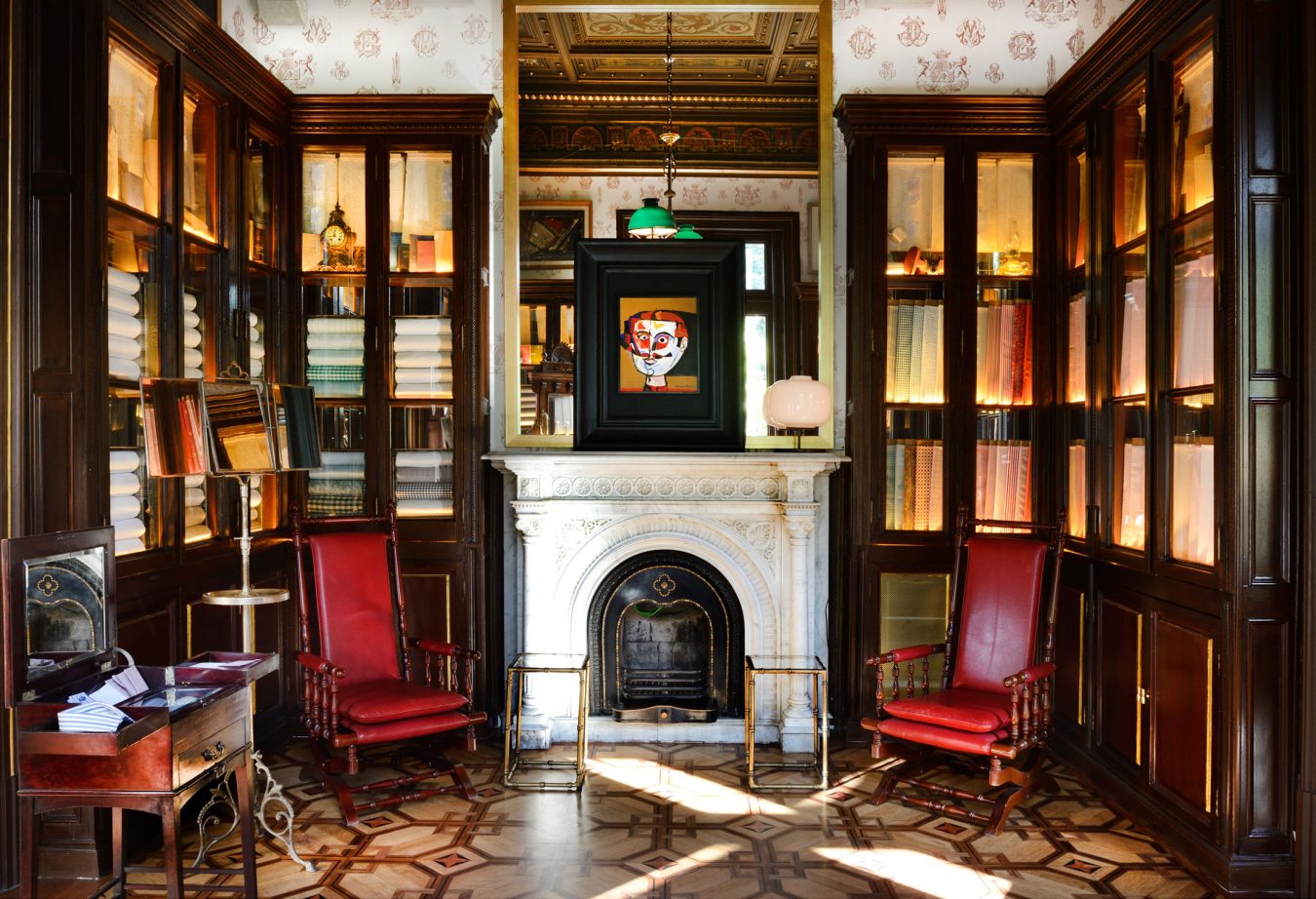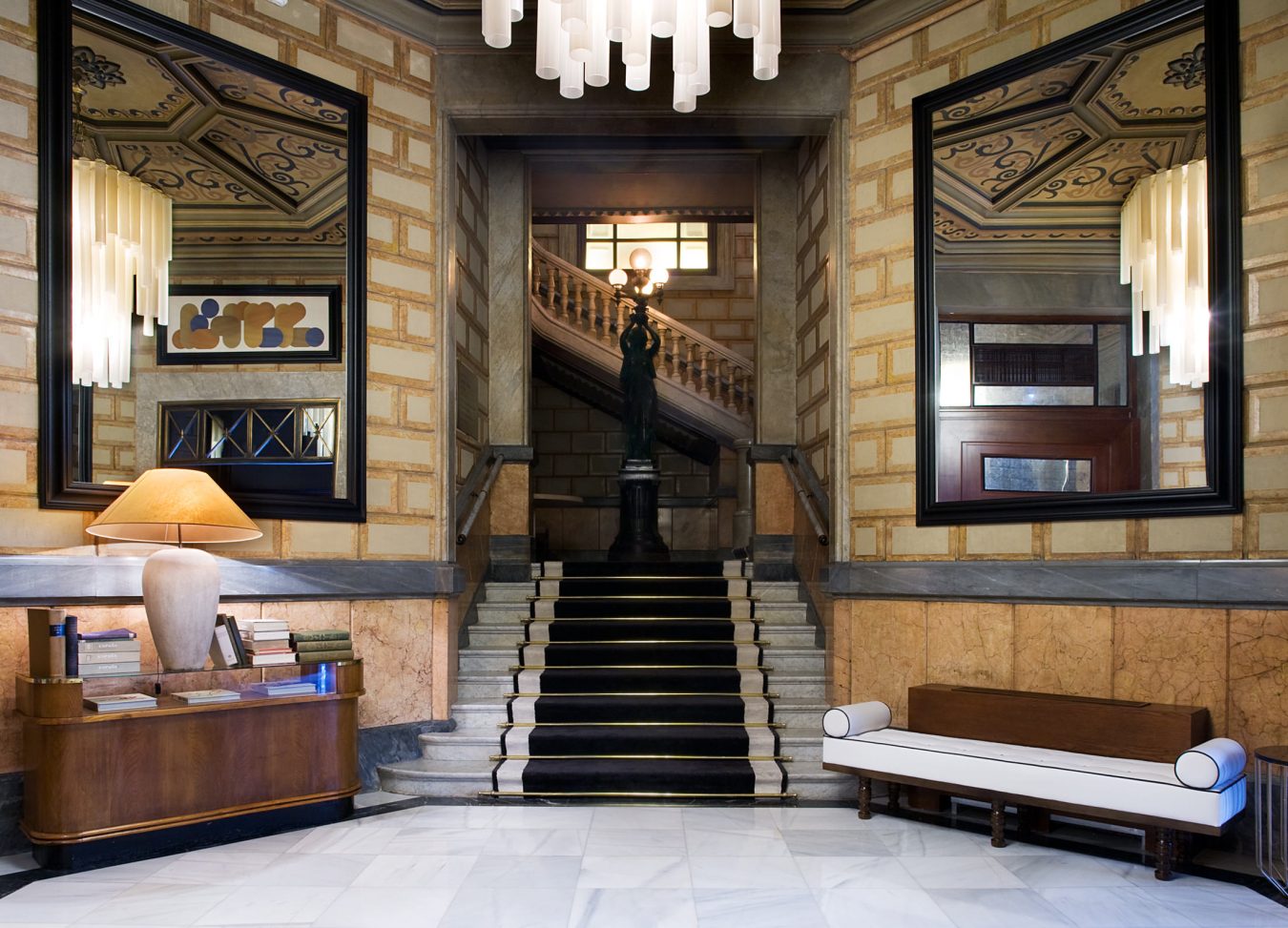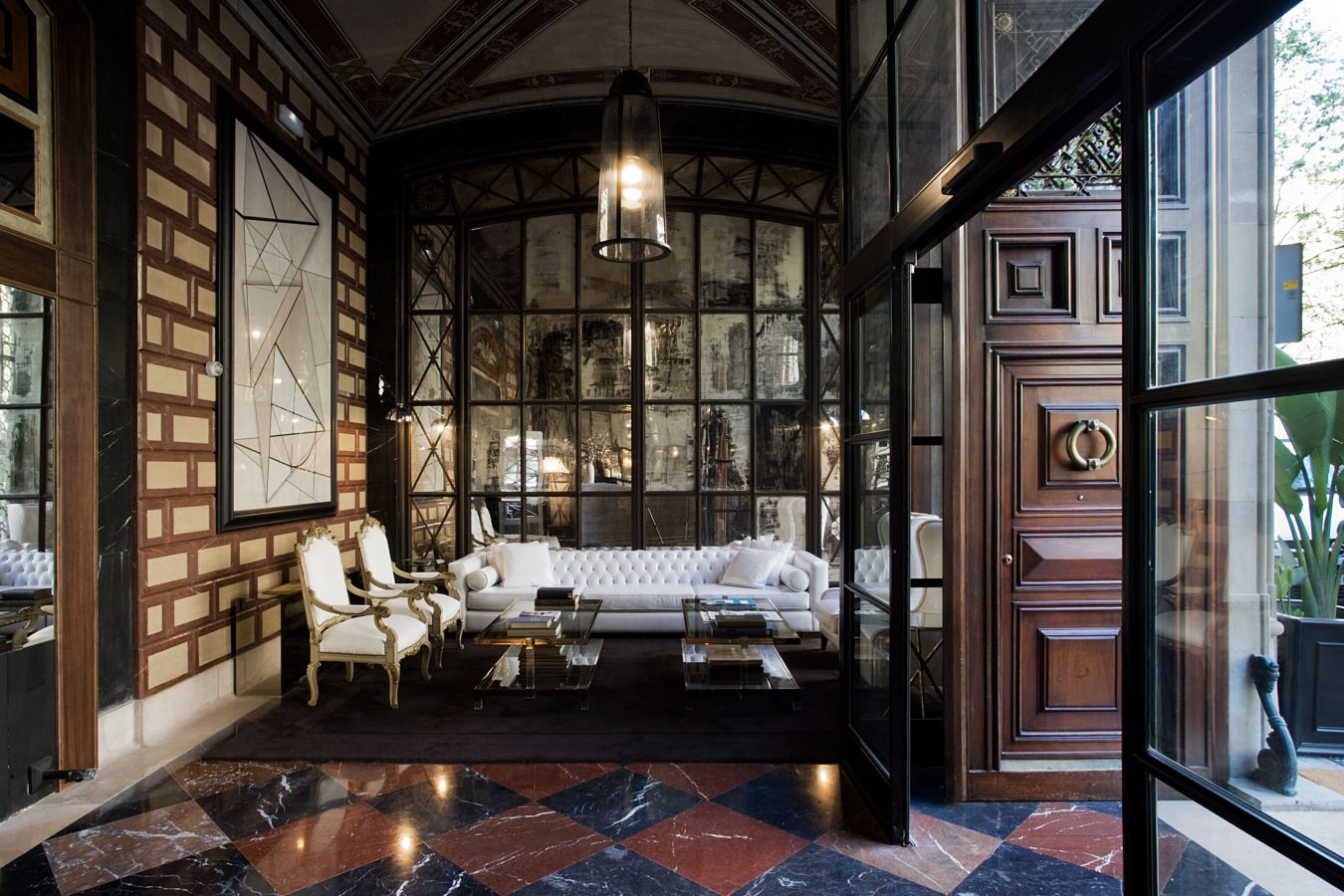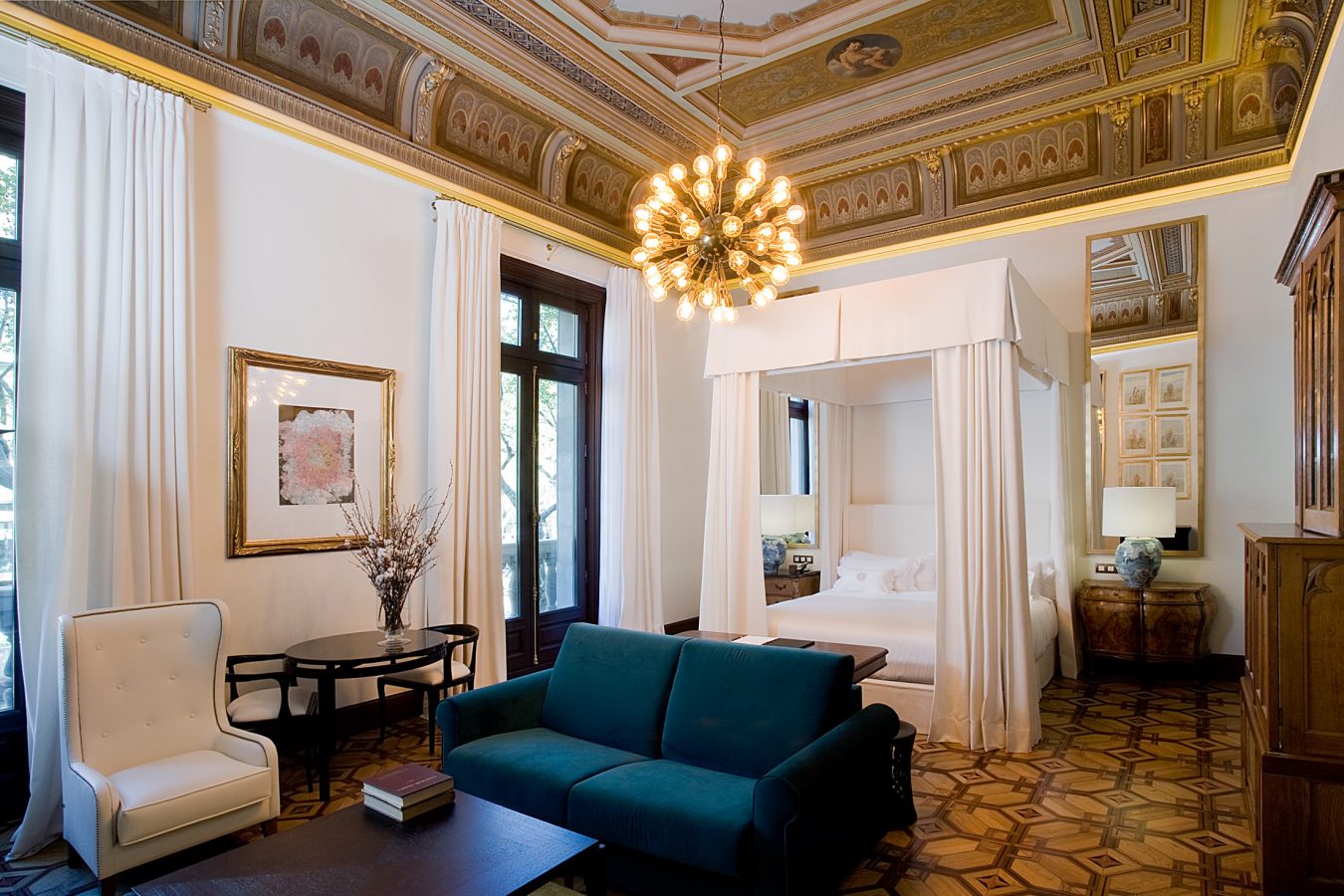The Cotton House Hotel does not make a grand entrance. At least, not from the outside. From the sidewalk of Barcelona’s busy Gran Via de les Corts Catalanes, save from the men in sharp suits, one might not even realize the hotel is there. But inside, well, that is another story.
From the second the lobby is entered, a soft yet intoxicating scent—a custom fragrance created exclusively for the hotel—makes guests feel instantly invigorated. To the right, smiling receptionists; to the left, a chic reception with grand mirrored walls and tasteful sofas. It is charming, photo-worthy. But honey, you ain’t seen nothing yet.
Bags are whisked to their rooms as guests ascend the grand marble staircase—a feature of the building that has been preserved since its days as the 19th-century neoclassical headquarters for Fundación Textil Algodonera, or the Cotton Textile Foundation. Originally commissioned by a Catalan bourgeoisie family at the height of the textile industry, the property was eventually bought by the Cotton Producers Guild in the 19th century and acted as their headquarters until it was rented to a group of Barcelona hoteliers. A careful renovation project was undertaken, and the Cotton House Hotel was launched in February 2015. Part of Marriott’s bespoke Autograph Collection and a member of the coveted Kiwi Collection, the Cotton House is nothing short of marvellous.
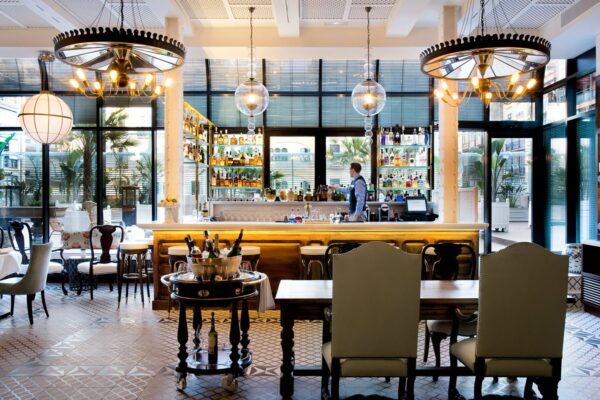

Designed by Lázaro Rosa-Violán, the interiors of the hotel do a fantastic job of bridging the past with the 21st century. Original ceiling embellishments and parquet floorings were preserved and kept, as were some of the guestrooms’ walls. Also remaining in its place is the jaw-dropping 1957 spiral staircase, which, amazingly, is completely detached from the bottom floor and is solely suspended from above. Of course, contemporary elements were added in the renovation, and they are weaved effortlessly throughout: accents of gold, modern furniture, and jars of colourful marshmallows give the spaces a relaxed, almost playful essence.
There is Batuar, the hotel’s restaurant, where undoubtedly many photo ops have happened at the bar. With white-cushioned stools and many leafy plants, it emanates an understated luxury (and produces some mighty fine tropical cocktails). Batuar is where breakfast is served in the mornings, a mix of delectable buffet items—everything from charcuterie to pastries—and hot plates ordered off the menu. One of the restaurant’s dining rooms boasts original books salvaged from the cotton guild, gorgeously backlit in white bookcases; above, authentic ledgers and notes were turned into wallpaper. Outside on the patio, where there are tall plants and black-and-white lounge chairs, one could easily spend an afternoon in the sun with a drink and some homemade potato crisps.
Across the concierge desk hall sits the library, which back in the day was used as a meeting room for the Cotton Producers Guild. Now it is a sophisticated reading nook that serves afternoon tea; don’t be surprised to find a few people reclining with a book or newspaper here pretty much any time of the day. From there, to the right, guests find themselves in L’Atelier, where swatches of fabric can be chosen for one’s own custom, tailor-made garment (and where the aforementioned marshmallows can be spotted). This room was actually used by cotton executives to have their measurements taken, a job that is proudly done now by Barcelona’s prestigious Santa Eulalia tailors.
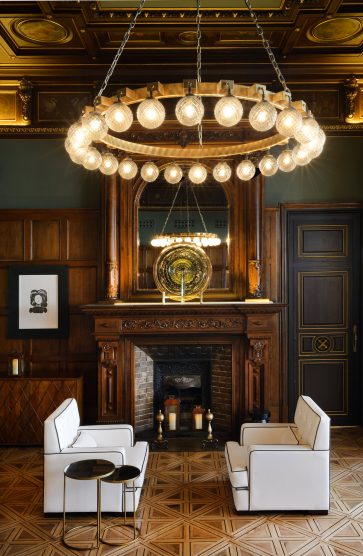
Then there is the rooftop pool, a simple oasis that overlooks the busy streets below; Antoni Gaudí’s iconic Sagrada Familia can even be seen in the distance, cranes still delicately working away to finish his basilica masterpiece. The swimming pool water is cold, perfect for sweltering days, and a selection of loungers are ready for an afternoon nap.
In-room, it is of course 300-thread-count Egyptian cotton for the bedsheets and towels. Soft and inviting, the bed offers easy recluse after a day of exploring the snaking streets of this mesmerizing city. In some rooms, drawings of the cotton plant are backlit on the headboard, adding an imaginative and fitting touch. And that, really, is the name of the game at Cotton House: connecting past and present in ways that feel genuine, fluid, almost organic. No stone is left unturned here, and no detail is too small to incorporate. The hotel’s greatest strength is its discreet opulence—the kind that stands the test of time. The kind that lodges itself into memory, bringing with it the whimsical feeling of wandering these great halls.

